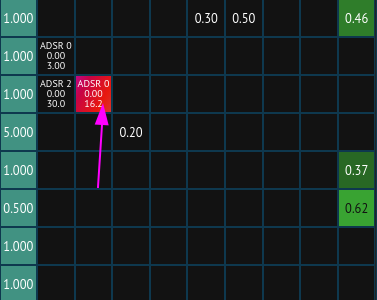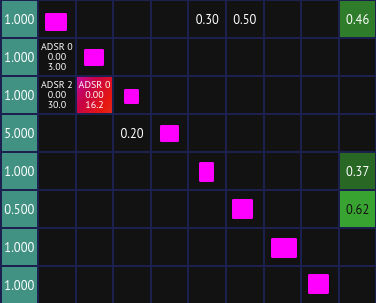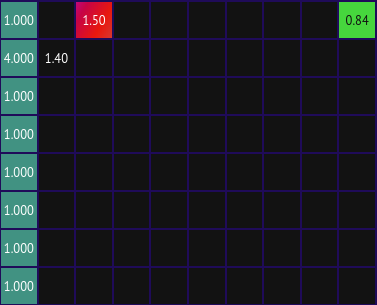web synth docs
modulation index
The modulation index is a number that corresponds to how much an [operator] modulates the frequency of another operator. There is some math that determines how the modulation index translates into an actual multiplier that is applied to the output of the modulating [operator] which is based off the frequency of the modulating operator.
In the [modulation-matrix], the cells in the middle show the modulation index of each possible operator to operator modulation. For example, this cell:

controls the modulation index of operator 2 -> operator 1. In the example image, the modulation index changes over time according to the output of an [envelope-generator] that outputs values between 0 and 16.2. That means that depending on the current state of the envelope generator, the modulation index of operator 2 -> operator 1 is somewhere between 0 and 16.2.
feedback
Feedback is when an operator modulates itself directly or via a loop in the modulation graph somewhere further down. Direct modulation occurs in cells marked with pink here:

This modulation matrix also exhibits feedback because operator 2 modulates operator 1 which in turn modulates operator 2 again:

Feedback very quickly produces extremely harsh, loud, and noisy sounds, so it's advisable to be careful with it.